Letizia Battaglia was convinced that one day she would be shot dead. Or worse. She knew better than most the horrific ways in which mafia victims were brutalised and degraded.
The death threats came in the form of anonymous phone calls and letters. But she carried on, documenting the mafia’s most horrific crimes through photography for almost 20 years, refusing to be cowed. Some of her images were later used as evidence in court hearings.
Now 84, Italy’s first female newspaper photographer is the subject of award-winning director Kim Longinotto’s new documentary film, Shooting The Mafia, which lays bare the ugly realities of life under the Corleonesi mob.
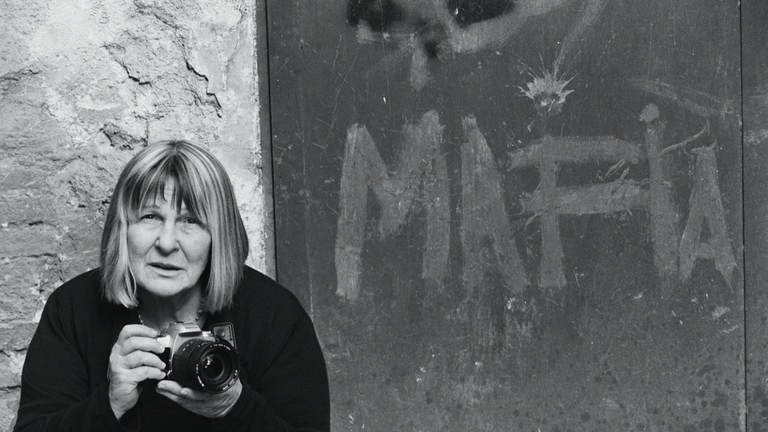
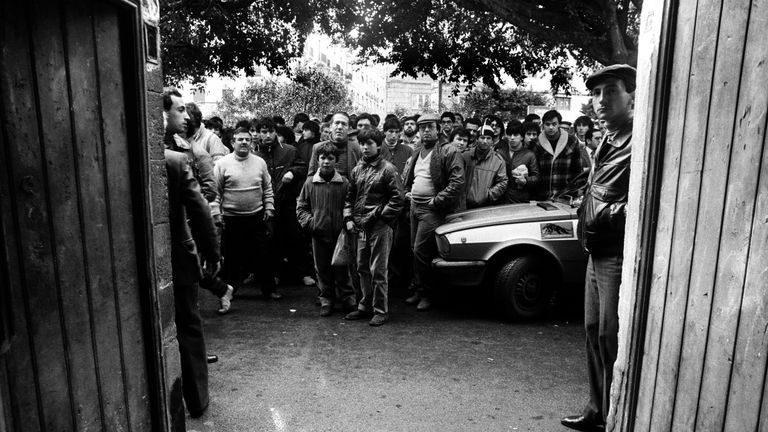
“Your first murder, it never leaves you,” Battaglia tells the camera, recalling the first dead body she ever saw, just three days into her job at a newspaper in Palermo.
She recalls the sights, the smell, how she shook at the sight of the corpse. What she did not know at that time was that this would be the first of hundreds of bodies, the start of “an archive of blood”.
In sharp contrast to the slick, glamorised portrayals we see on the big screen, Shooting The Mafia features photographs of murders so horrible, Longinotto has found herself dreaming about them.
Lifeless corpses, the suffering etched on the faces of the families left behind; Battaglia documented it all.
One in particular is difficult to erase from memory: a little boy, face down on a petrol station forecourt in a pool of blood; a witness to his own father’s murder, he had been shot from behind at close-range.
Battaglia had never let anyone see that photo before, Longinotto tells Sky News . Too graphic to include here, it features in the film because it is an image that truly shows the lengths the mafia would stoop to.
“There’s something incredibly unforgiving about This is a brutal act, there’s no way around it … We had to have that in the film because you never get that in a mafia film. “
Longinotto, who has made a name for herself documenting female rebels and outsiders, says Battaglia’s was a story she had to tell.
“Everything she does is about breaking conventions, she doesn’t seem to abide by any of the rules. And the courage that she had. When you think she just had a camera – she didn’t have bodyguards, she didn’t have anything. “
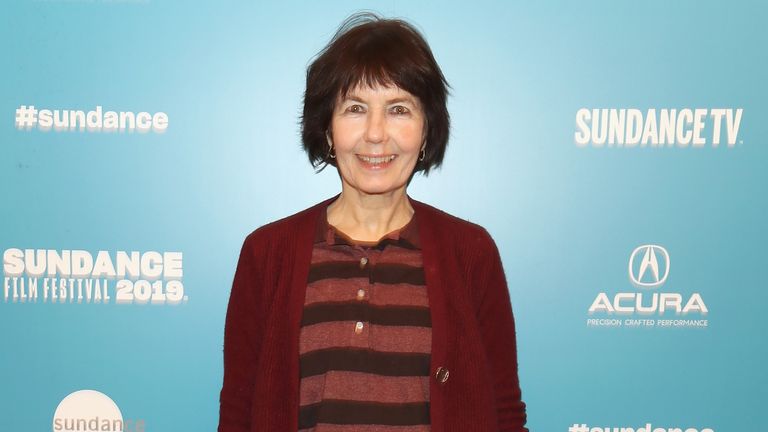
AsMartin Scorsese’s new star-studded mob epic The Irishmanis soon to hit Netflix following its release in cinemas, the timing of Shooting The Mafia seems apt.
“The more you dig into the mafia, the more you find out about them, they were just really, really nasty, the lowest of the low criminals, and cowardly,” says Longinotto. “They weren’t these guys in beautiful suits that went around shooting each other, they killed innocent people, children.
” You realize we have been sold this incredibly elaborate myth of what the mafia is, and it’s quite shocking. Even though you think it’s not propaganda, it is. You end up in spite of yourself identifying with the mafia [watching Hollywood films]. It’s extraordinary. “
The scale of the mafia’s brutality and power in the 1970 s, ‘ (s and early ’90 s is revealed through rare footage, newsreel and Battaglia’s personal photographs – from an archive of around 600, 000 – and her memories. Battaglia herself refers to the images she took over the years as “an archive of blood”.
There is nothing glamorous about the reality of Bodies thrown among sheep carcasses and dissolved in acid; cactuses and rocks placed in victims’ mouths, a child kept in captivity and shot in the back of the head, without a second thought.
“There’s this whole idea of some men being better than other men,” she s ays. “We’re men of honor and they’re not proper men. And it means that you can get away with whatever you want.”
She refers to the recent deaths of 39 Vietnamese nationals whose bodies were found in a lorry trailer in Essex last month.
“I suddenly saw a link between [the mafia] and all the things that are going on in the world right now; the trafficking, those 39 bodies.How can someone do that, with so little regard for those people. Or letting people drown in boats.
“How can you do that? The only way I think you can do that is by somehow convincing yourself that you’re better than them, that they’re lesser than you. They’re only Vietnamese, or they’re only Jewish, or they’re only black people. No sane, normal person would think like that.
“I think all of these things are why I feel really passionately about this mafia story; there’s layers of it that can speak to us. “
For Battaglia, photographing the mafia became her life mission, says Longinotto. “It was, ‘I’m going to show the world what these people do’.
” But she did it for 20 years; after a while I think it starts eating into you and it starts making you terribly depressed. She was passionate about it but at the same time, she hates her photos. She says she wanted to burn them. “
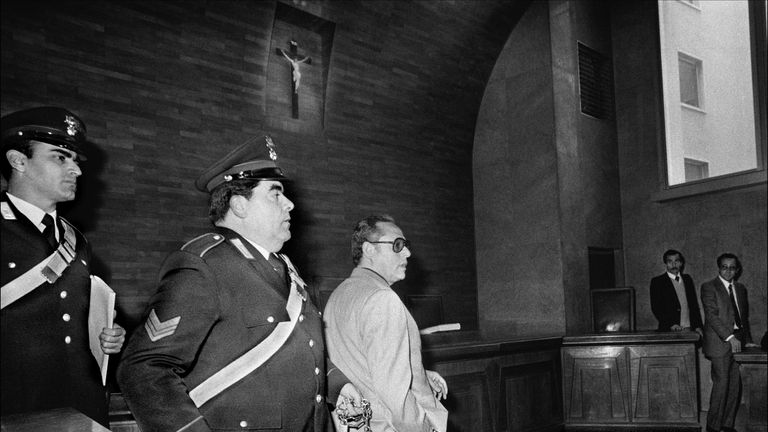
While depicting gruesome scenes and painful emotions, Battaglia is a talented photographer whose pictures aestheticize the tragedy. In the documentary, she tells how she hates the fact people can see beauty in the images.
“If you look at her photos, if you really stand and look at one of her pictures, they are absolutely beautiful, “says Longinotto. “I think that’s what she meant; they’re beautiful works of art, actually, even though they’re of the most horrific thing. And I think that’s really difficult, in the same way that if you’re filming an atrocity of something , you want to film it the best way you can to make it the most moving piece of craft that you can.
“I think it had become too close to home. When people she loved dearly were being killed, blown up… What kind of photo were you going to take? But that’s what she was there for. I think bearing witness to atrocities is an incredibly soul-destroying thing. I think it’s an incredible thing to do and a really brave thing to do. But I think you hate yourself when you do it.
“Let’s say if you or I were walking down the road and we were photographers, and we’re walking down the road and a child is shot by the mafia; your last instinct is to kneel on the pavement and take a photo of him. Get the framing right, make sure that your shadow isn’t in it, see where the light is, plan it and take a beautiful photo. That is a kind of monster thing to do. And yet, it’s essential. You have to do it. “
On (May) , judge Giovanni Falcone, who had spent most of his adult life trying to overthrow the power of the mafia, was assassinated in a bombing. A close friend of Battaglia’s, she could not bring herself to take the photo at the scene.
“He was a dear friend and she loved him,” says Longinotto . “And yet she was there to take photographs. She says, ‘I let him down, and I miss the photos. I miss the photos that I didn’t take’.”
Falcone had told Battaglia following the death threats she received that she should stop her work, leave Sicily.
“But she went home and she thought , well, you haven’t left, Falcone. And so I shouldn’t leave, either.
“That’s the only way that people can fight people like the mafia, they do have to put their work first, because they’re probably going to die. But fighting this scourge was the most important thing. “
Battaglia exhibited her work in Corleone in” an extraordinary act of defiance, “says Longinotto.” of saying, ‘look, I’m not afraid of you’.
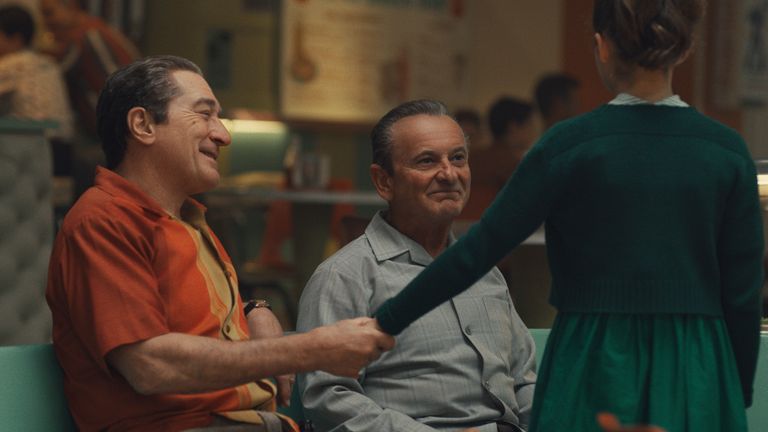
Battaglia was a woman, on her own. Presumably, if the mafia had really wanted her dead, she would be dead? Was it that they enjoyed the heightened level of notoriety her pictures gave them?
“I have wondered why she wasn’t killed, because it would be the easiest thing in the world to creep up on a woman on her own. I often try and think like a mafia…
“But yes, they absolutely loved the fame, loved the fact that, oh, this is my handiwork. More and more, her photographs got on to the front page. It’s a warning and it’s a boast and it’s a threat, all of those things. But I think her images of children, they won’t have liked that. The one of the little boy, they would have hated that one.
“That’s another thing: in the mafia films, you never see the children. see the effect it has on people.You never see the kids walking to school and there’s a body in the road.You never see kids that have actually witnessed a murder.You don’t see the crowds around, you don’t see the family, the funerals or any of that. People are killed and then you just forget about them. “
Longinotto says working on Shooting The Mafia has changed her perception towards the Hollywood depiction of organized crime.
“I’ve grown up watching all The Godfather films and Goodfellas, and then Sopranos and Gomorrah and all the kind of gangster films .
“I completely took it. You know, it’s entertainment, it’s just fun. And itisfun. But all these films are telling us things about our lives and who we are and who to be inspired by, you know? And it’s never people like Letizia. It’s never people like that, the ordinary people who go to work every day. It’s always these guys with lots of money, nice cars, and it’s gone so deep in our culture. And that that’s where Hollywood has put its energies, on the whole.
“It’s really hard because I know I’ll go and see another gangster movie and after about a minute I’ll be thinking, oh, I hope Al Pacino gets away. I’ll be into it, you know. That’s what they do. “
Longinotto may be a documentary maker, but she says she is sure there could be scope to transform Battaglia’s story to the big screen.
“I don’t know of any long films which you can go to the cinema and watch where they have heroes like Letizia. But if they had the will they could make a film about Letizia, easily. Or Falcone.
“I love going to the cinema. I love getting lost in the world. And [mafia films] are good fun. But there’s this little voice [now] saying, ‘this isn’t what the mafia is like’.
“The more you find out about these people – people are going to be amazed. “
Shooting The Mafia is released on (November)




GIPHY App Key not set. Please check settings